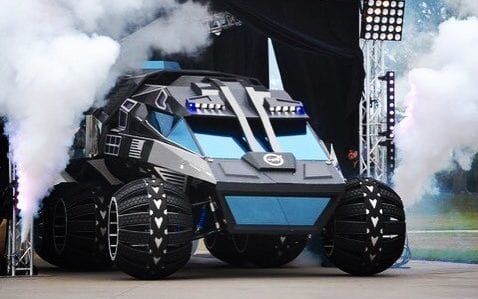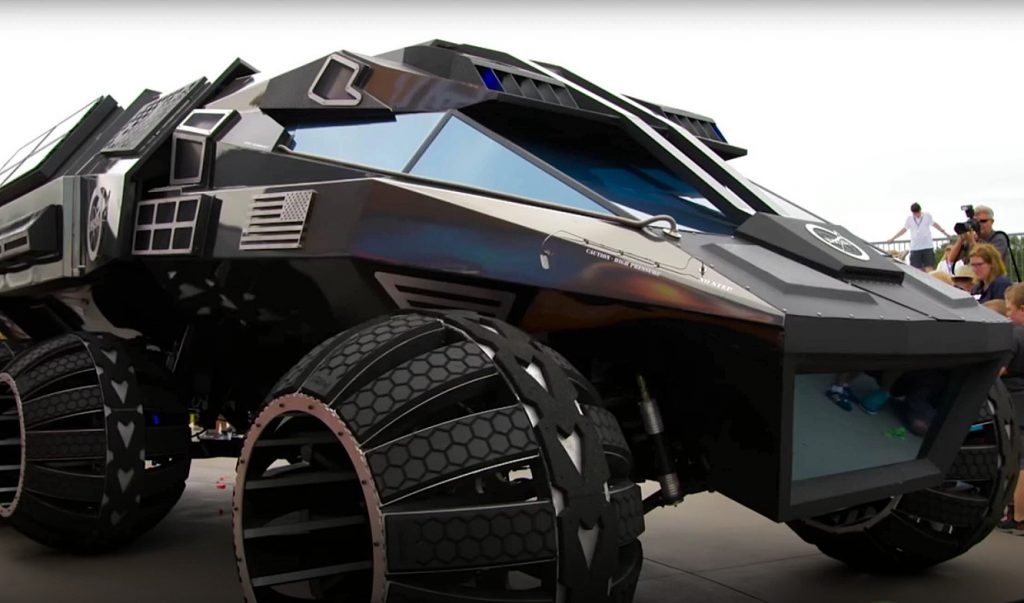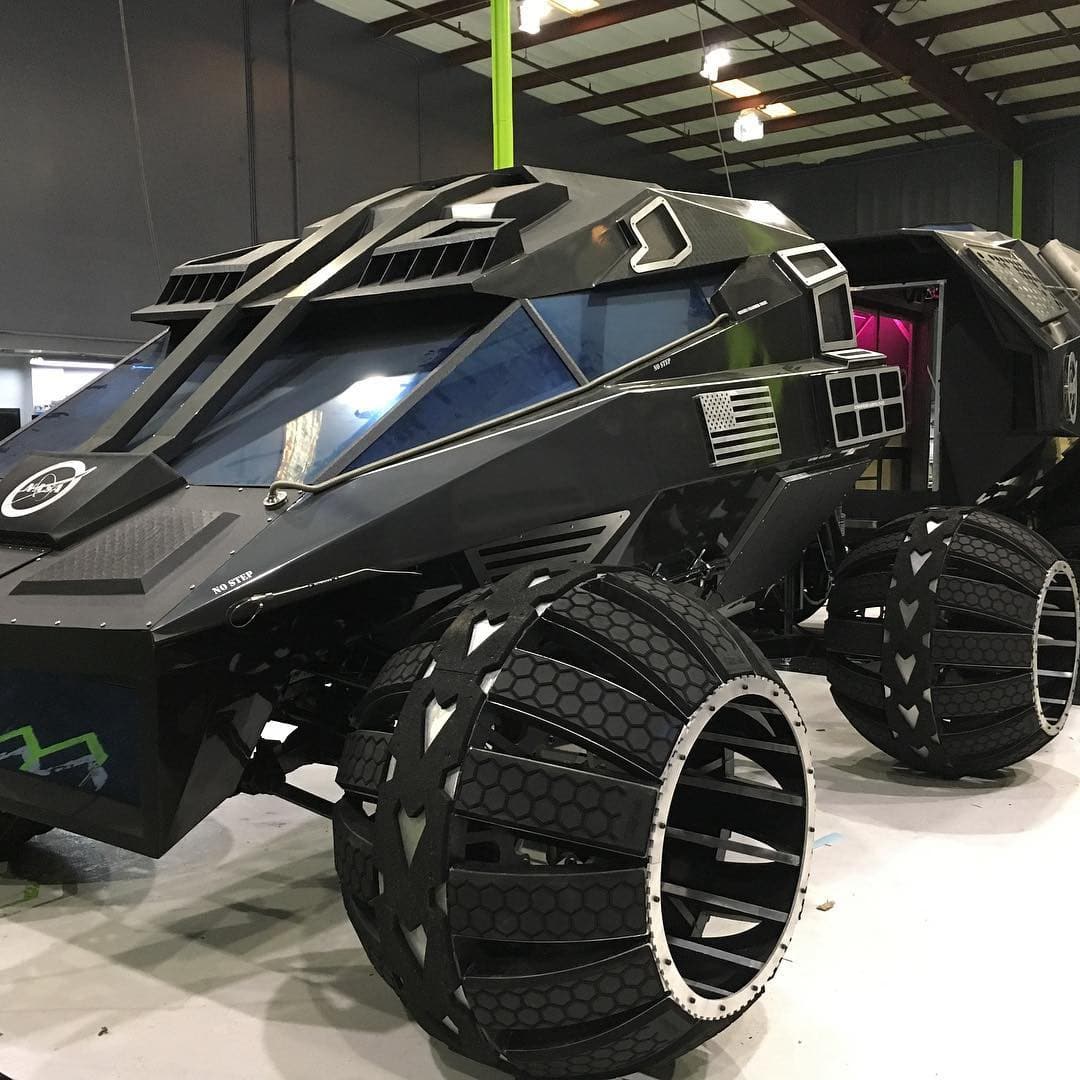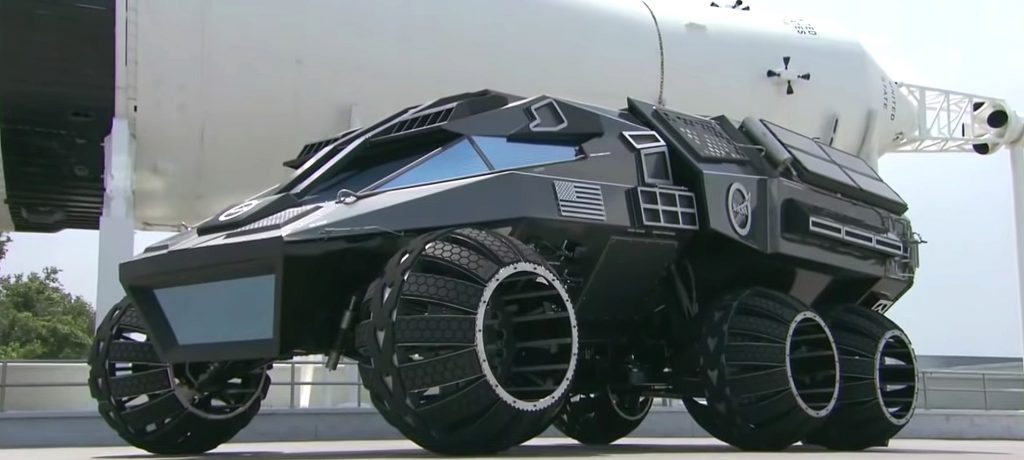Elon Musk’s “Blade Runner” Cybertruck may only be a couple days away from being unveiled to the world, but the vehicle, from its final specs and design, remains a mystery. The Tesla CEO has stated that the vehicle will not look like a traditional pickup truck, and this has been confirmed by teasers from the company and clever Easter Eggs hidden in the CYBRTRK event’s invitation and the vehicle’s stylized logo.

Considering that Musk has stated that the Tesla Cybertruck will look like an armored personnel carrier (APC) from the future, it’s difficult to not see the potential similarities between the vehicle and NASA’s Mars Concept Rover, which was unveiled back in 2017. NASA’s Mars Rover concept looks a lot like an APC from the future, and it looks very tough. It’s massive at 28 feet long, its ground clearance is no joke, and its modular structure allows it to perform a variety of tasks on the harsh environment of the Red Planet.

Quite interestingly, Tesla’s CYBRTRK seems to have some design cues that may very well be similar to that of NASA’s Mars Rover Concept. Tesla’s Easter Eggs show the Cybertruck with a smooth sloping hood, high ground clearance, and an APV-like silhouette. The similarities between the two vehicles’ design (at least based on what Tesla’s Easter Eggs have shown so far) are so notable that one can’t be faulted for speculating that the CYBRTRK may be used by Elon Musk’s companies not just as a disruptive pickup on Earth; it may also be used as a basis for a potential SpaceX Mars Rover.

This sounds very much like a statement from a sci-fi novel, but considering Musk’s habit of doing the unorthodox and implausible, a double-purpose heavy-duty vehicle may actually make sense. Musk likely prefers to have as much overlap between Tesla and SpaceX’s technologies, after all. Last September, for example, Musk stated that Teslas have the potential to work in other planets. “Well, actually, Teslas will work on Mars. You can just drive them, pretty much, because electric cars don’t need oxygen, they don’t need air. So you can just drive them around, no problem,” Musk said during SpaceX’s Starship Q&A session.

That being said, creating a crewed Mars Rover from the CYBRTRK’s platform would be incredibly challenging. For a Mars Rover project, SpaceX and Tesla would most likely focus on making the vehicle as light as possible. This is due to the Rover being part of a payload that gets sent to space. Payloads are very expensive, and thus, equipment from the CYBRTRK that’s useful on Earth will likely not be relevant for a vehicle designed for Mars. Performance is also pretty irrelevant in a crewed rover. If Tesla were to design a crewed Mars rover based on the Cybertruck, it would have to create massive modifications to the vehicle in itself, from its battery cooling systems to its equipment.
Look at the right side of the image behind the veticle lens flair! Is that an ATV shape like @elonmusk mentioned?? @Tesla pic.twitter.com/giOEORsOat
— Dirty Tesla (@DirtyTesLa) November 20, 2019
This, of course, would be a pretty challenging endeavor on both Tesla and SpaceX’s part. The difficulties of creating a vehicle capable of traversing a foreign planet from the platform of an Earth-based truck are no joke, after all. Things do get a bit easier if SpaceX ends up using the CYBRTRK platform to create an unmanned Mars Rover.

Tesla has a lot of experience in autonomous driving, and this could play very well into its advantage if Elon Musk’s private space firm decides to deploy unmanned rovers to explore the Red Planet. With this concept in mind, a tough, lightweight vehicle that’s loaded to the teeth with tech and based on the CYBRTRK platform could make sense. Tesla and SpaceX would still have to overcome massive challenges in creating a space-capable land vehicle from a pickup truck platform, but there’s no denying that the electric car maker’s expertise in designing and making EVs can very well make an affordable, reliable unmanned Mars Rover feasible.

Inasmuch as these ideas may sound implausible, it should be noted that a Mars Rover project between Tesla and SpaceX will likely not strain either company. The number of rovers needed for the initial years of a Mars mission, crewed or unmanned, will likely be very small, perhaps an order of magnitude less than the rollout of the original Tesla Roadster. Thus, both companies could innovate to the limit based on the CYBRTRK platform and it would not be a difficulty at all. The size of a CYBRTRK-based rover may not even be much of an issue, provided that SpaceX’s Starship rollout goes off without problems.
Tesla deserves a lot of credit for keeping the CYBRTRK a secret until today. Considering its futuristic cues and Elon Musk’s fond references to the vehicle being a truck worthy of a sci-fi set, the pickup truck may very well be the machine that bridges Tesla and SpaceX, at least to some degree. Even if the only parts of the Cybertruck that can be used for a Mars Rover are its chassis and powertrain, such an overlap will still be incredibly useful. Such ideas are crazy, but they may also be classic Elon Musk.





